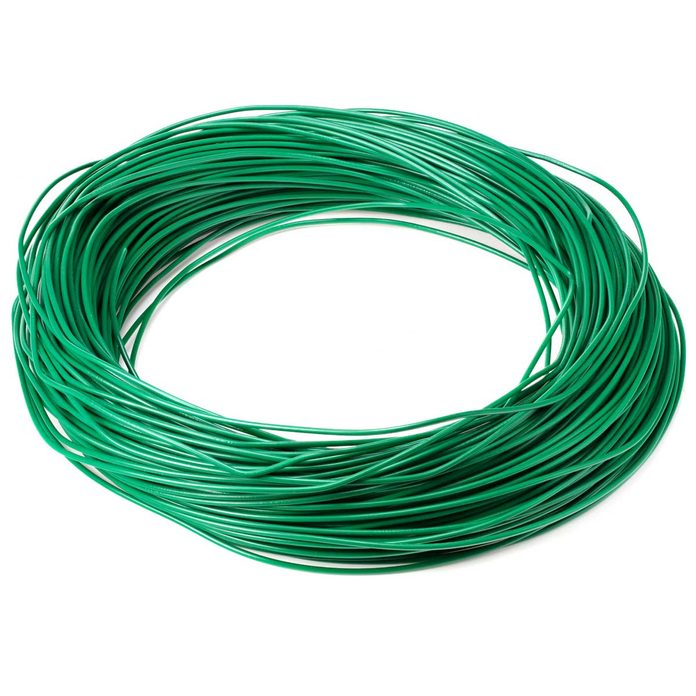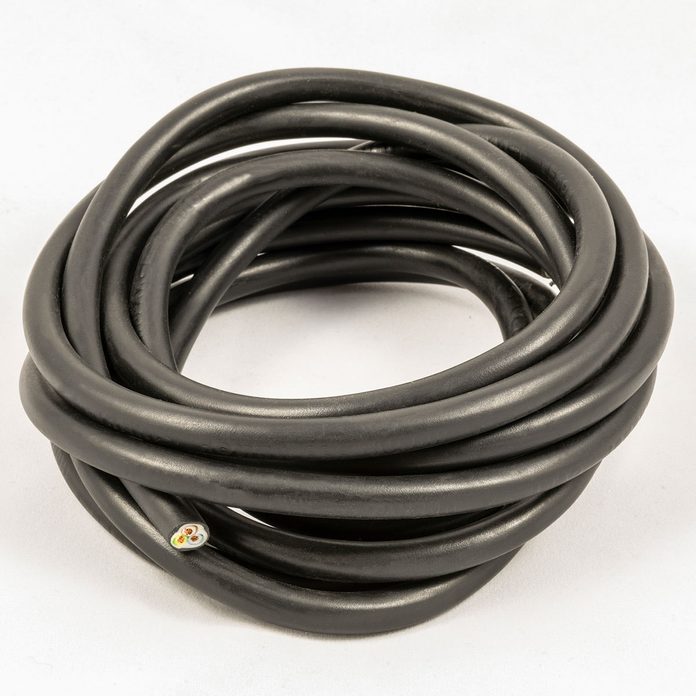What Colors Are Ground Wires On A Car
ane / 5

Green, Green-Yellow and Bare
Co-ordinate to Mark Dawson, chief operating officer of Mister Sparky, "green insulated wires are used for grounding." Light-green is the nearly common ground wire color, but "green-yellowish" (light-green wire with a yellowish stripe) and "bare" wire (copper wire without colored insulation) can also be used.
Footing wires reduce the risk of electric overload and fires by redirecting excessive electricity during a short circuit or similar fault. Consequently, they can conduct electricity and should exist handled with circumspection. "Never use a light-green wire for any purpose other than for grounding, as this may pose a serious threat of electrocution," Dawson says.
Older homes with"knob and tube" (Yard&T) wiring merely have a black "hot" wire and white "neutral" wire, without any ground wire. "This older type of wiring does non provide a ground for modernistic appliances, which can lead to impairment to the apparatus or even worse — injury or death," says Dawson. If you observe this type of arrangement while performing electric piece of work in your habitation, Dawson recommends replacement because "there is no way to make this type of wiring safe."
2 / 5

Blackness
Black wires are "hot" wires, which means they acquit a live electric current from your electrical panel to the destination. They feed electricity to electrical outlets, switches and appliances from the home'southward main power supply.
Black wires can besides exist used as "switch legs" that connect wall switches outlets and appliances (like ceiling fans or lights), and become energized when the switch is turned on. Black wires should always exist considered live, so taking proper safety precautions is important to avoid electrocution. This includes shutting off the excursion breaker that supplies the wires you're working on, or shutting downward the power to the whole house at the main electrical panel.
To verify the wire is no longer energized, Dawson recommends using a multimeter. A non-contact voltage tester tin can also exist used.
iii / 5

Red and Orange
Red electric wires oft act equally secondary live wires. They're oftentimes used when installing larger appliances like stoves, dryers or air conditioning units. Smaller electric appliances are oftentimes powered past a 120-volt circuit that simply requires a unmarried (black) supply wire, just larger appliances are ofttimes supplied past a 240-volt circuit that uses an additional (red) supply wire. Ruby-red wires can also be used in some 120-volt applications.
Similar black wires, carmine wires tin can be used equally switch legs. Dawson notes that red wires are commonly used when installing ceiling fans that use divide switches for the fan motor and calorie-free. When this is the case, the hot black wire is connected to i switch to operate the fan motor, and the hot red wire is connected to some other switch to operate the light.
Red wires are too used as "trigger wires" for interconnected smoke alarms. In this case, the carmine trigger wires allow all the interconnected alarms to go off simultaneously when one alarm is triggered. Orangish wire may be used in place of crimson for all of these purposes.
four / 5

White and Gray
"White or gray indicates a neutral wire," Dawson says. A neutral wire returns electricity from the hot wire back to a grounded portion of the home's electrical panel to complete the circuit. Without information technology, the electrical current couldn't broadcast and the alive wire couldn't provide usable power. As a event, a neutral wire can comport a live electric current.
Dawson explains that the term neutral can be dangerously deceiving considering appears to imply a non-electrified wire. Nonetheless, neutral wires may carry power and can as well pose a danger of electrocution if non handled properly.
Furthermore, neutral wires tin can be used equally a hot wire if both ends are conspicuously marked with colored electrical tape (black or red) that corresponds to its repurposed function. In either case, handle them the same fashion you would a hot wire, and have the aforementioned prophylactic precautions.
5 / v

Blueish and Yellow
"Blue and yellowish wires are sometimes used as hot wires," Dawson says. Specifically, blue and yellowish electrical wires are often used as "traveler wires" for transferring power between 3- or four-way switches.
Three-way and 4-style switches operate a unmarried appliance from multiple locations and utilise traveler wires to connect the switches. Blueish and yellowish are considered the nigh common travel wire colors, only brown or purple/violet tin as well exist used. Yellow is more commonly used as a switch leg instead of a traveler wire in these applications.
Originally Published: February 12, 2021
What Colors Are Ground Wires On A Car,
Source: https://www.familyhandyman.com/list/what-electrical-wire-colors-mean/
Posted by: millertheannigully.blogspot.com


0 Response to "What Colors Are Ground Wires On A Car"
Post a Comment